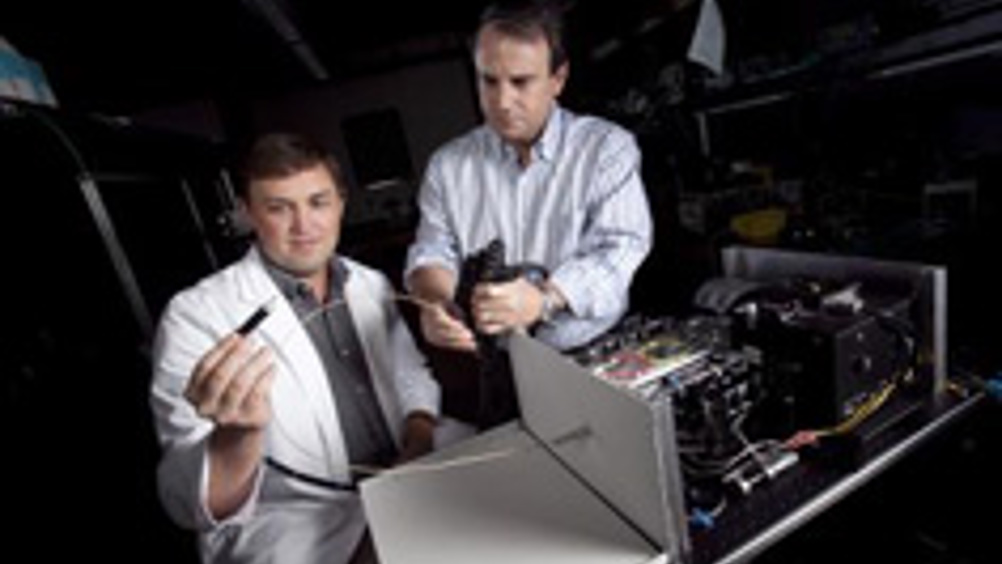Light technology could aid oesophageal cancer detection
A tiny light source and sensors at the end of an endoscope may provide a more accurate way to identify pre-cancerous cells in the lining of the oesophagus.

Developed by biomedical engineers at Duke University and successfully tested on patients during a clinical trial at the University of North Carolina at Chapel Hill, the device holds the promise of being a less invasive method for testing patients suspected of having Barrett’s esophagus − a change in the lining of the esophagus due to acid reflux.
Long periods of acid reflux can change the cells that line the esophagus, making them appear more like intestinal cells than esophageal cells. These cellular changes can also be a precursor to cancer. As in most cancers, early identification of these pre-cancerous cells often leads to better outcomes for patients.
Using an endoscope to reach the esophagus via the nose, physicians shine short bursts of light at locations of suspected disease, after which sensors capture and analyse the light as it is reflected back. In particular, they are trying to spot characteristic changes within the layer of cells known as the epithelium, which line cavities and surfaces throughout the body.
Register now to continue reading
Thanks for visiting The Engineer. You’ve now reached your monthly limit of news stories. Register for free to unlock unlimited access to all of our news coverage, as well as premium content including opinion, in-depth features and special reports.
Benefits of registering
-
In-depth insights and coverage of key emerging trends
-
Unrestricted access to special reports throughout the year
-
Daily technology news delivered straight to your inbox










CCC Report Finds UK Climate Targets Still Within Reach
In 1990 67% of the UK´s electricity came from coal-fired power stations and even without renewables the transition to gas was a major contributor to...